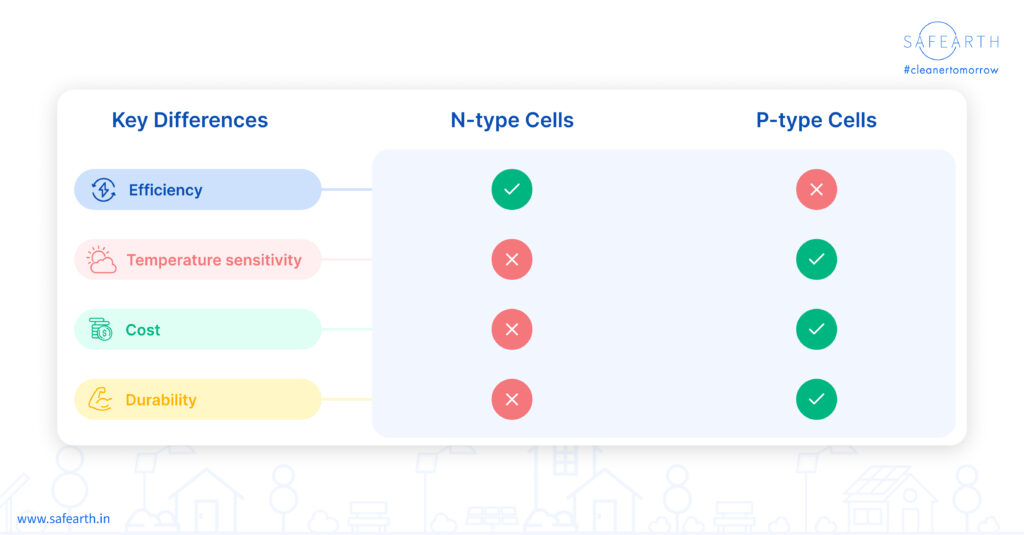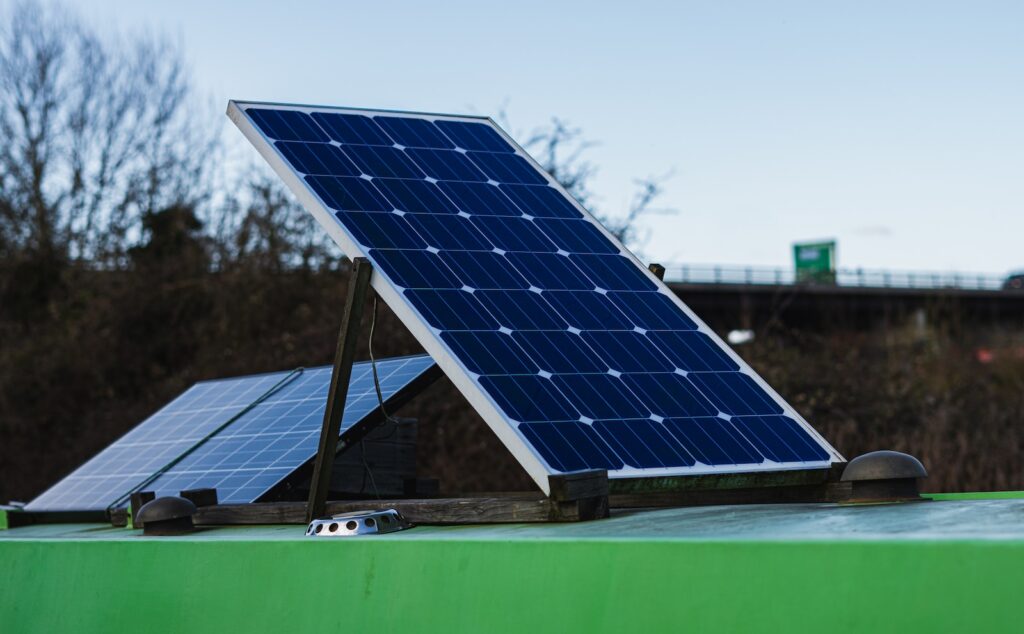Harnessing solar energy through photovoltaic (PV) modules has become increasingly popular as a sustainable and renewable energy source. However, diving into the world of solar panels can quickly lead to confusion, especially when faced with terms like “P-type” and “N-type” solar modules.
In simpler terms, think of P-type and N-type solar panels like two sides of the same coin, each with its own unique characteristics and benefits. Understanding the difference between them is crucial for anyone interested in solar energy, whether you’re a homeowner considering installing panels or just curious about renewable energy technologies.
In this blog, we’ll break down the key differences between P-type and N-type solar modules in simpler terms, helping you grasp the basics of these essential components in the world of solar power.
P-type and N-type Semiconductor
Link : https://www.youtube.com/watch?v=6dUpV2ovqog
What are P-Type and N-Type Solar Modules?
First off, let’s understand what P-type and N-type refer to. They are related to the materials used in making solar cells, which are the building blocks of solar panels.
P-Type Solar Modules:
P-Type stands for positive-type. These solar cells are made using a semiconductor material such as silicon, which is doped with elements like boron. When boron is added to silicon, it creates a surplus of “holes” in the material, which can accept electrons. This creates a positive charge, hence the name “P-type.”
1. Silicon-Based: P-type solar modules are usually made from silicon, the most widely used material in photovoltaic technology due to its abundance and favorable semiconductor properties.
2. Doped with Boron: P-type silicon is doped with elements like boron, introducing “holes” into the crystalline structure, which act as positive charge carriers when sunlight strikes the solar cell.
3. Lower Efficiency: While P-type solar modules have been the industry standard for years, they generally exhibit slightly lower efficiency compared to N-type modules. However, advancements in technology continue to narrow this efficiency gap.
4. Lower Cost: One of the primary reasons for the widespread adoption of P-type modules is their relatively lower manufacturing cost compared to N-type modules.
N-Type Solar Modules:
N-Type stands for negative-type. Unlike P-type cells, N-type cells are doped with elements like phosphorus, which introduces extra electrons into the silicon structure. This creates a negative charge, hence the name “N-type.”
1. Negative Charge Carriers: In comparison with P-type cells, N-type cells have negative charged particles, typically electrons, as a majority charged particles.
2. Doped with Phosphorus: N-type silicon based cells are doped with elements like phosphorus, which introduces excess electrons into the crystalline structure, enhancing efficiency.
3. Higher Efficiency: N-type solar modules have higher efficiency and better performance under extreme conditions like low light and high temperatures, compared to P-type solar modules.
4. Lower Degradation: N-type modules have lower degradation, leading to better long-term performance and reliability, particularly in harsh environmental conditions.
Key differences :
1. Efficiency: N-type solar cells typically have higher efficiency compared to P-type cells. This means they can convert more sunlight into electricity.
2. Temperature Sensitivity: P-type cells have better performance at higher temperatures as compared to N-type cells. In extreme hot climatic conditions, P-type cells have a slight higher advantage in maintaining their efficiency.
3. Cost: Typically, N-type cells are more expensive to produce due to less availability of the raw material i.e., phosphorus. However, with the advancements in technology and manufacturing processes, the cost has been lowered.
4. Durability: N-type solar cells are resistant to degradations such as light-induced degradation (LID) and potential-induced degradation (PID). This leads to longer lasting solar panels and better performance over time.

Which One Should You Choose?
When deciding between P-type and N-type solar modules, it often comes down to specific project requirements and budget considerations. If you need higher efficiency and can afford the slightly higher upfront cost, N-type modules might be the way to go. On the other hand, if cost-effectiveness and temperature resilience are more important factors for your project, P-type modules could be the better choice.
Conclusion
The choice between P-type and N-type solar modules depends on various factors, including project requirements, budget constraints, and desired performance characteristics. Both types have their own pros and cons and advancements in technology continue to push the boundaries of efficiency and cost – effectiveness in solar energy generation. Every project is unique, demanding different types of solutions, which helps setting up the plant with maximum potential of solar energy systems.
Are you ready to dive into the world of solar, contact SafEarth for an easy and hassle – free switch.

